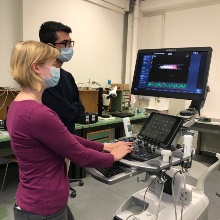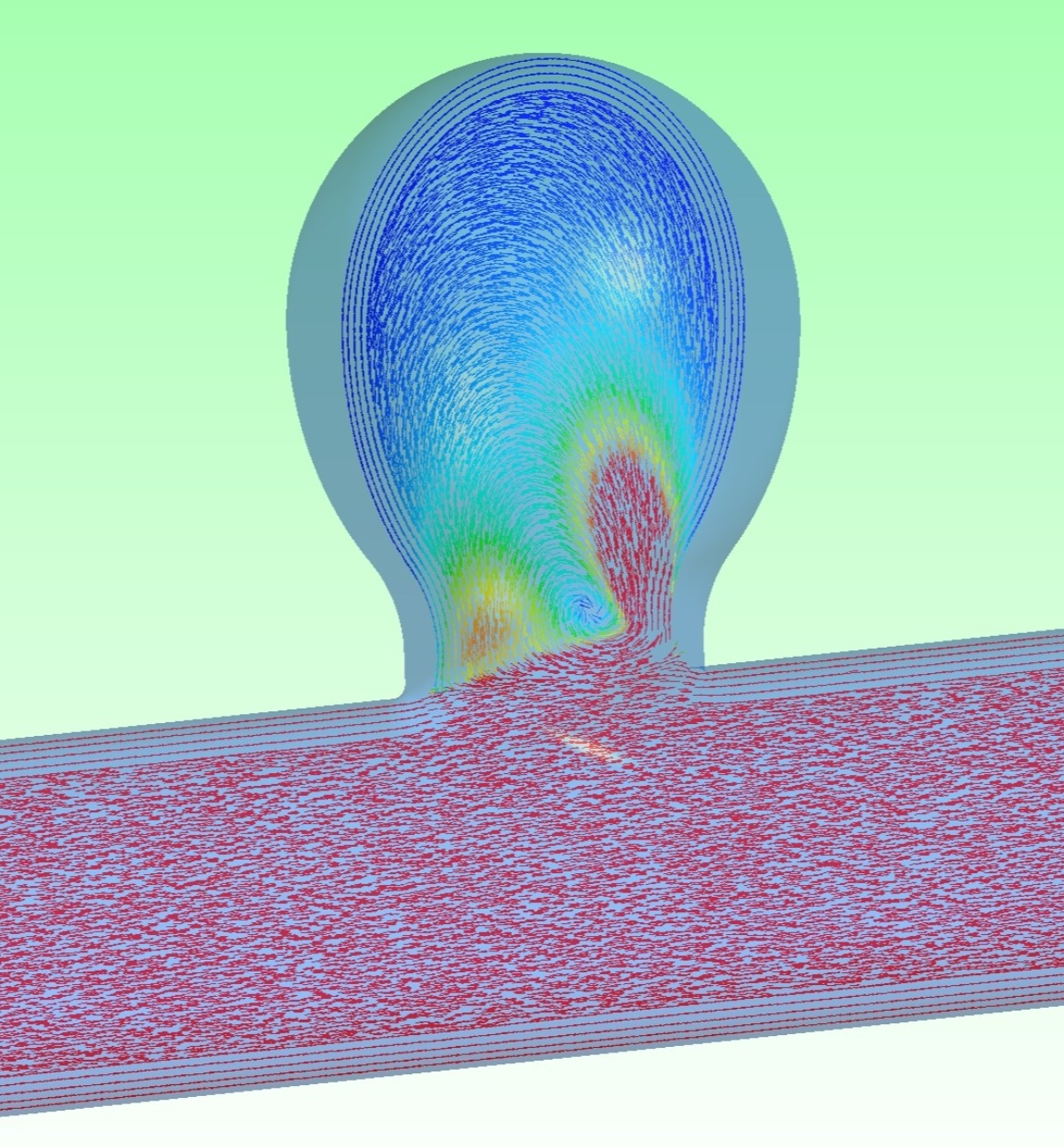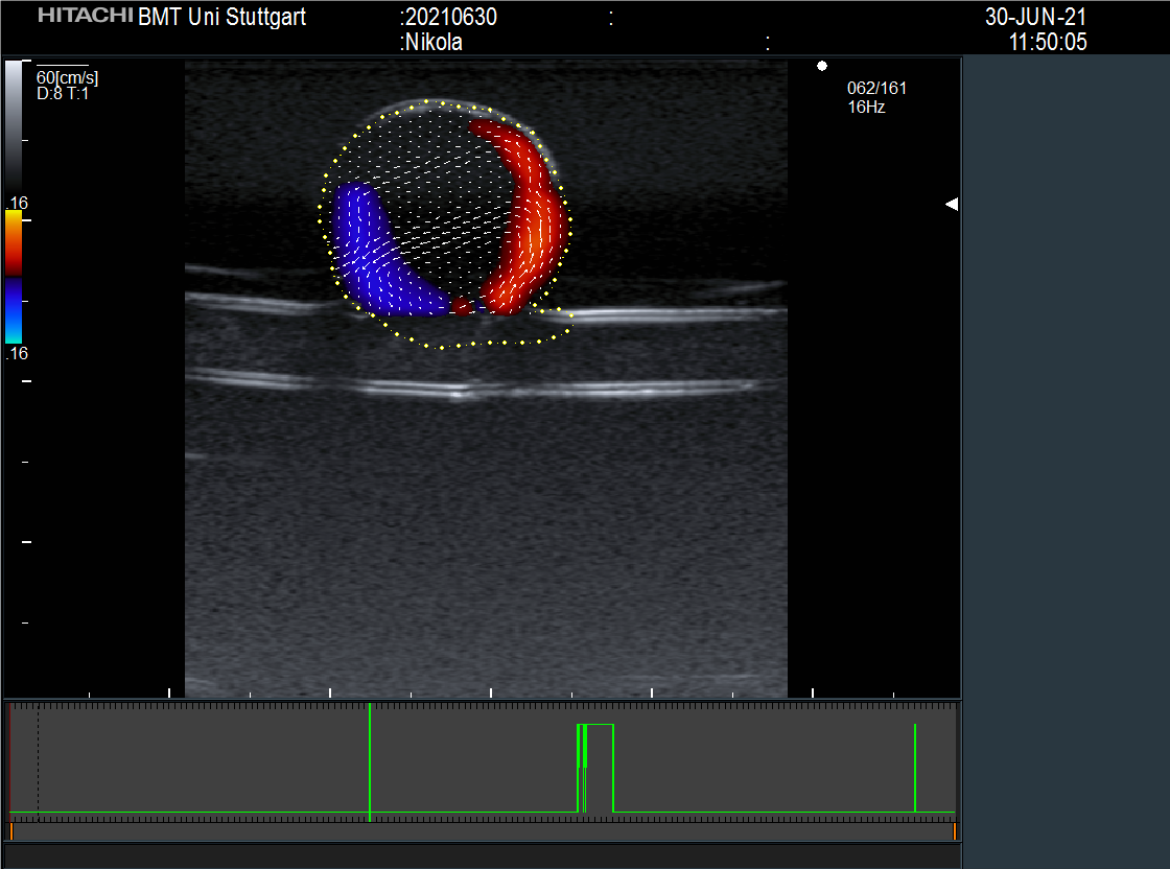Objective
The development of aneurysms and atherosclerosis in various arteries may lead to critical vascular disorders such as bleeding and blood supply disruption into tissues like the heart and brain. Reliable characterization of such vascular anomalies and the influence of implants on vessel mechanics and hemodynamics is the focus of this research field.
At BMT, cardiovascular and neurovascular blood flow distribution into standardized as well as personalized, imaging-based anatomical vascular models is investigated by means of a novel ultrasound system: Using advanced Vector Flow Mapping (VFM) software, new parameters like Vorticity, Energy Loss, Circulation and Shear Wall Stress can be analyzed directly on blood. On the other hand, vessel and implant mechanics are investigated in a pulsating flow using high-transparent, low-friction hydrogel-based models under microscopy.
Among other implants, the effect of fine-meshed, self-expandable implants such as flow diverters and grafts on endoluminal and intraaneurysmal fluid dynamic is a central concern of our work. A comprehensive investigation of mechanical and fluid dynamics interactions between the implants and the vessel models is aimed at providing crucial information about the mechanisms of thrombus formation as a therapeutic mechanism – like in occlusion and flow diversion devices – as well as complications – like in in-implant thrombosis and distal embolization.

Ashkan Shiravand
M. Sc.Research Assistant




